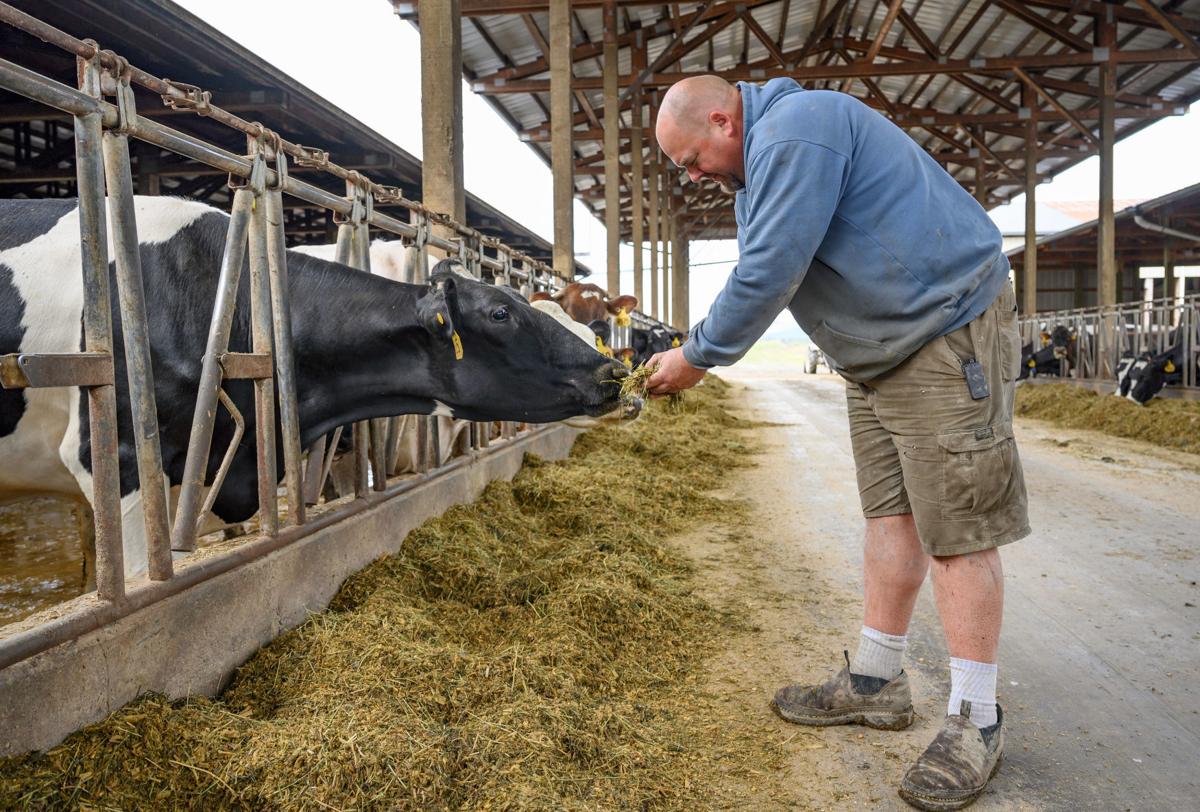 At the start of the year, things were looking up for Skagit County’s dairy farmers, with milk prices trending upward after five years of low prices.
At the start of the year, things were looking up for Skagit County’s dairy farmers, with milk prices trending upward after five years of low prices.
The COVID-19 pandemic has reversed that, sending milk prices plummeting and disrupting markets. Markets for restaurants and schools — shut down to stem the spread of the virus — have collapsed, and the industry is rushing to reroute dairy products to grocery store shelves.
The massive shift in the supply chain has forced farmers throughout the country to dump excess milk, but dairy farmers in the Pacific Northwest appear to have avoided doing that — for now.
Darigold, which processes and sells milk from farmers who are members of the Northwest Dairy Association cooperative, has not had any farmers dump milk and doesn’t anticipate that will happen, Stan Ryan, president and CEO for Darigold, said in a written response to questions from the Skagit Valley Herald.
The dairy co-op has 26 members in Skagit County.
Ryan said the company has upped shipments of dairy products to grocery stores to meet rising demand, but it’s not enough to offset financial losses from major customers such as schools. He said exports of products such as milk powder and bulk cheese have also declined due to disruptions in global trade.
Meanwhile, farmers in Skagit County are bracing for less money in the coming months.
In January, farmers were receiving $19 and close to $20 per 100 pounds of milk, a price slightly above the cost to produce the milk, said Jason Vander Kooy, owner of Harmony Dairy west of Mount Vernon.
Since the pandemic began, the price has fallen to between $11 and $12 per 100 pounds.
Vander Kooy said farmers will start to feel the impacts of lower prices in May and June, when checks arrive for milk produced earlier in the spring. If the price continues to drop, farmers could be looking at an almost 50% reduction in income, he said.
“As long as people are still eating, we will survive,” he said. “It’s tough to wake up in the morning and know it’s going to be a struggle. It just adds a lot more stress.”
Don McMoran, director of the Washington State University Skagit County Extension, said the price drop may push some farms that were barely surviving over the edge. He said he knows of three county dairy farms planning to sell their cows this year.
Chris Sybrandy, owner of Legacy Dairy near Conway, said no dairy in the country will be able to survive if milk prices remain as low as they are forecast to go in the coming months.
“We hope that those prices won’t hang around for more than a month or two,” he said.
Organic dairies, on the other hand, are in a better position.
“People who buy organic milk take it back to their house, whereas conventional milk is in coffee stands, restaurants and schools,” said Alan Mesman, an organic dairy farmer outside La Conner.
He said organic milk prices have been low for years, but unlike conventional milk, they’re not getting any worse.
Farmers have the option to buy insurance to protect their margins when milk prices fall.
However, few farmers opted into the Dairy Margin Coverage Program — one insurance program offered by the U.S. Department of Agriculture (USDA) — in anticipation of a strong market and higher prices in 2020, the American Farm Bureau Federation wrote in an analysis on its website.
A USDA spokesperson wrote in an email that there are no plans to immediately reopen the insurance program for enrollment, but there is other support available to farmers.
Last week, the USDA announced a $19 billion food assistance program that will include direct payments to farmers who have lost income due to the pandemic, and the purchase of dairy, meat and fresh produce for food banks and other organizations, according to an April 17 USDA news release.
Though farmers may get some help, there is no easy fix for the shake-up in the supply chain. Milk once intended for wholesale buyers must now be bottled. Hundred-pound wheels of cheese will have to be sold in smaller quantities in grocery stores.
“It’s not like there’s no food out there,” Vander Kooy said. “It’s just the connection between food and consumers. It’s borderline chaos. There’s plenty of food, but how do you get it to consumers? I hope things turn around and get better. We definitely don’t want them to get worse.”
Source: goskagit.com









